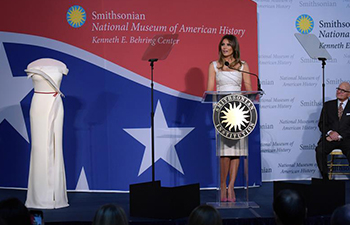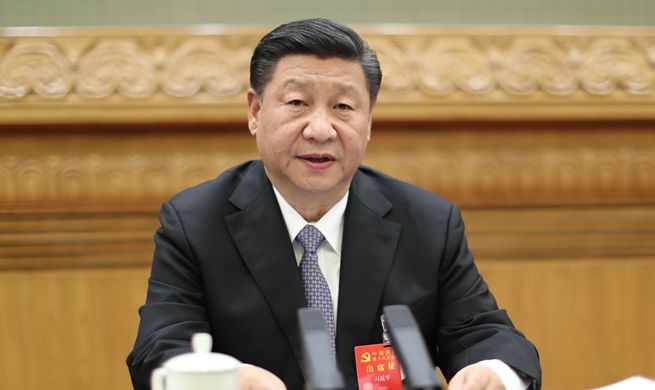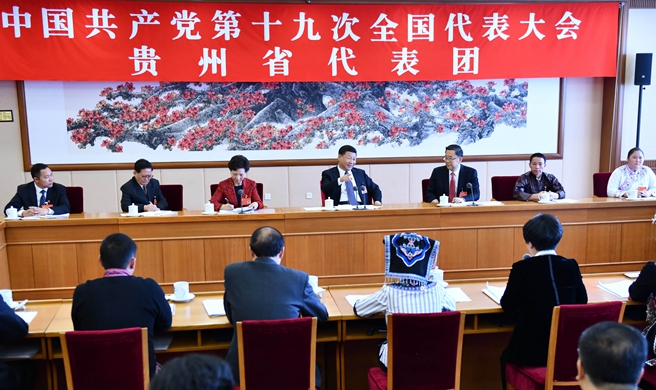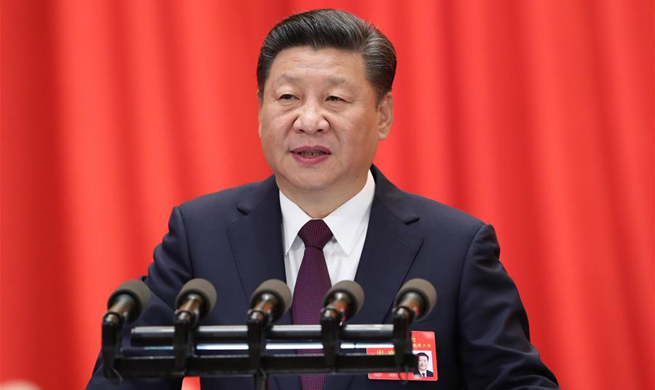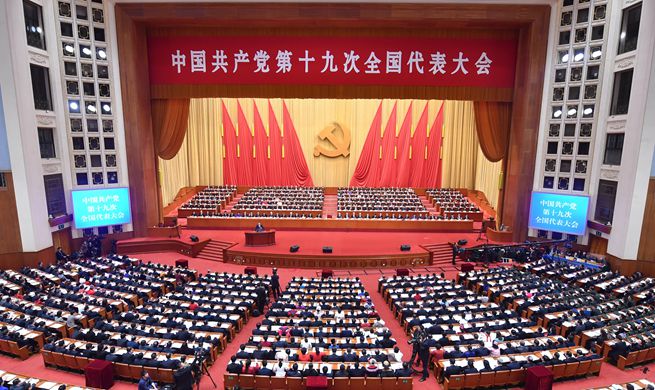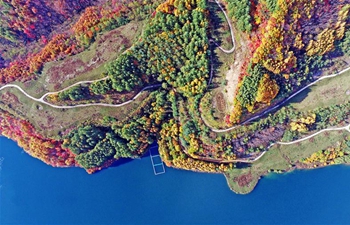by Robert Manyara
NAKURU, Kenya, Oct. 21 (Xinhua) -- Rael Cherop, a Kenyan woman in her 50s, cannot read or write, but her knowledge on the centuries-old craft of weaving ropes has given her rock star status among peers.
At her humble abode in the Rift Valley County of Nakuru, you will find Cherop twisting threads from woven bags into strands that she later ties into a six-strand rope.
The thick rope that varies in colors depending on raw material used can serve varying purposes from tying domestic animals, wrapping bundles of firewood or strapping a jerrican onto the back during water fetching chores.
Cherop, who lives with a relative after losing her land to unscrupulous people more than 20 years ago, said the earnings from the wares have kept her going.
"I make good money out of this work but I never went to any school to learn how to do it. It's just something I learnt from my female ancestors," Cherop told Xinhua.
For the past decade, the craft has become her alternative source of livelihood in case of failure of crops she usually plant in rented farms.
"I always have something to turn to when there is nothing to harvest or menial jobs to do in the neighborhood," she noted.
Cherop said there is always a market for her products which she mainly markets through word of mouth and referrals.
How she measures the length of a rope to fit the appropriate purpose is more of an indigenous understanding of measurements rather than the professional way of utilizing a tape measure or a ruler.
The size of the final rope is determined by the stretch of her both arms and she can tell which one is perfect for which activity.
"I cannot tell you about meters of the ropes I make because I don't know," she remarked.
"What I know is that a rope four times my arms stretch is okay for tying donkeys or cows. That which is three times works well with wrapping firewood and the one which is two-and-a half is suitable for holding in place a jerrican full of water," said Cherop.
In many rural parts of Kenya, women carry water and firewood on their backs with support of ropes buckled over their heads. And these women are her main clients.
"I have sold these ropes to women from Central Kenya, Western and Rift Valley. Some buy wholesale to sell to others and it always feels great when they make referrals," she said.
She sells the four-time arms stretch rope at 5 U.S. dollars, the three-times, 3 dollars and the two-and-a half, 2.5 dollars.
In three days she can make five ropes from a 90-kilogram woven bag which she presently buys at an average price of 9 dollars.
She begins with rolling six threads pulled out of the bag over her knee to make one filament. A process she repeats until she creates six of them. She then ties them together to make one rope.
"This knowledge is a resource that nobody can take away from me. I only wish I know how to patent it so that my products can be sold even in foreign markets because I know they are of good quality," Cherop said, adding that the ropes can last more than a year.
Cherop is among the thousands of women in Kenya who have the traditional knowledge in certain socio-economic aspects that can be monetized to change their standards of living. Apart from weaving and pottery, some know specific herbs for treating fatal diseases.
In Kenya's legislative framework, indigenous knowledge is recognized as essential in bolstering the country's growth, thereby encouraging communities to utilize it to benefit themselves and the nation.
According to Lucy Mulenkei, Executive Director of Indigenous Information Network, for women like Cherop to fully capitalize on their traditional knowledge, they need to be sensitized on available mechanisms of protecting it and how to diversify it and boost their revenue streams.
"You will find women having immense traditional knowledge but they do not know how to make use of it or go about it to avoid being exploited," said Mulenkei.
"That is why more sensitization has to be done at the local-level to enable communities to identify the resources they are surrounded with and which they can benefit from," she added.
Under the Nagoya Protocol, Mulenkei said traditional knowledge is a protected resource and thus it is critical that communities are enlightened enough on ways of not just safeguarding it but how to negotiate for benefits accumulated from its utilization.








